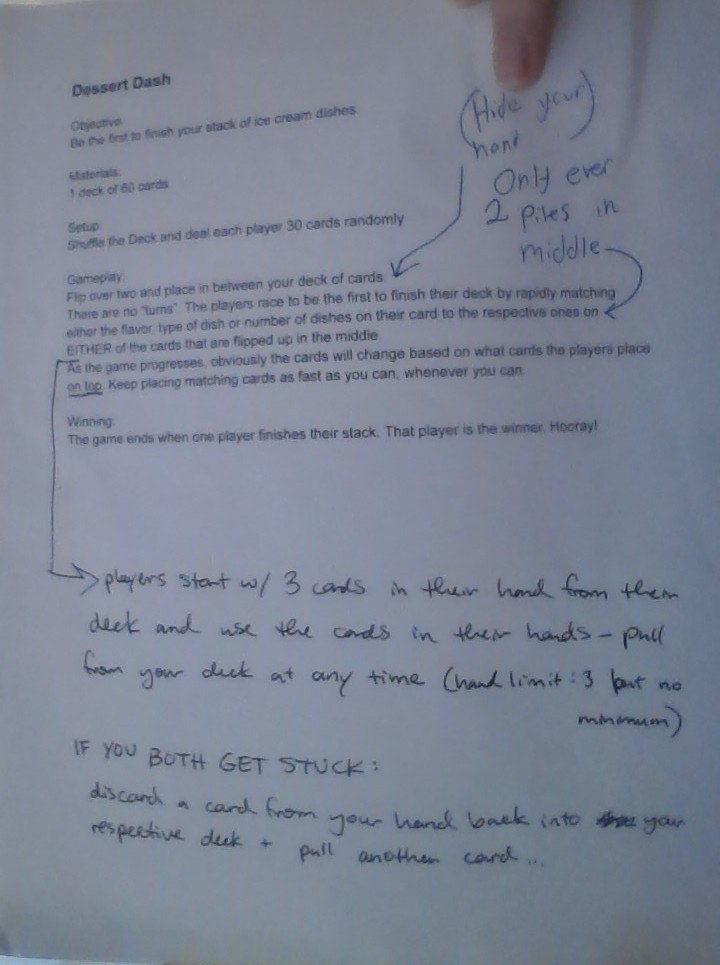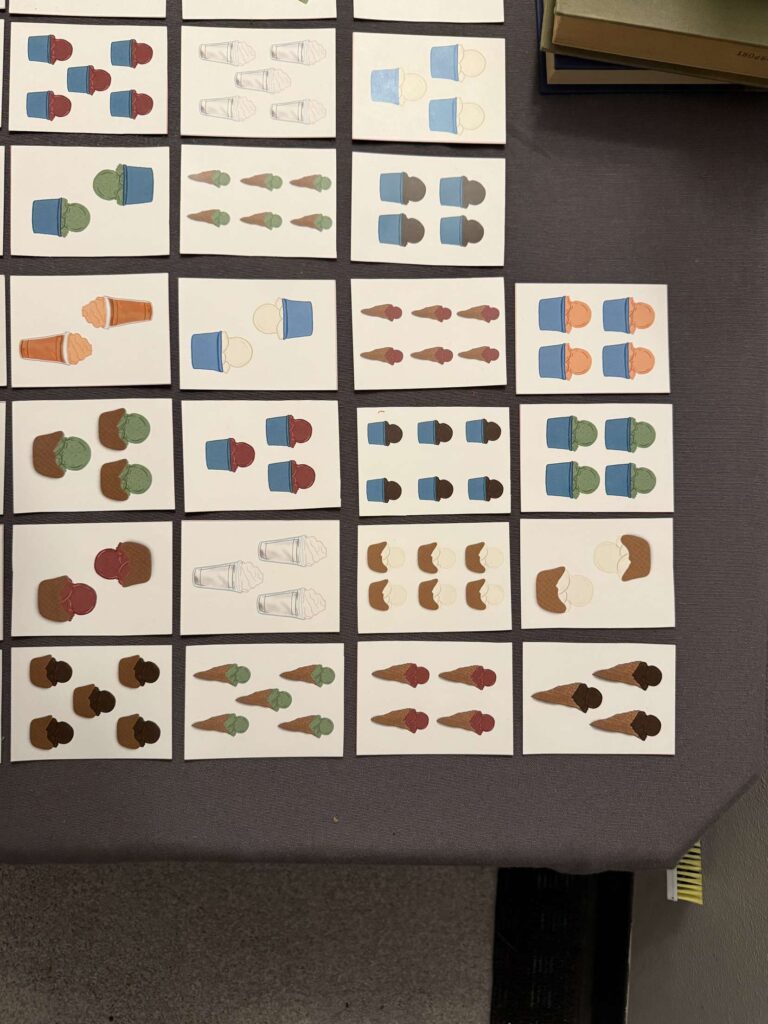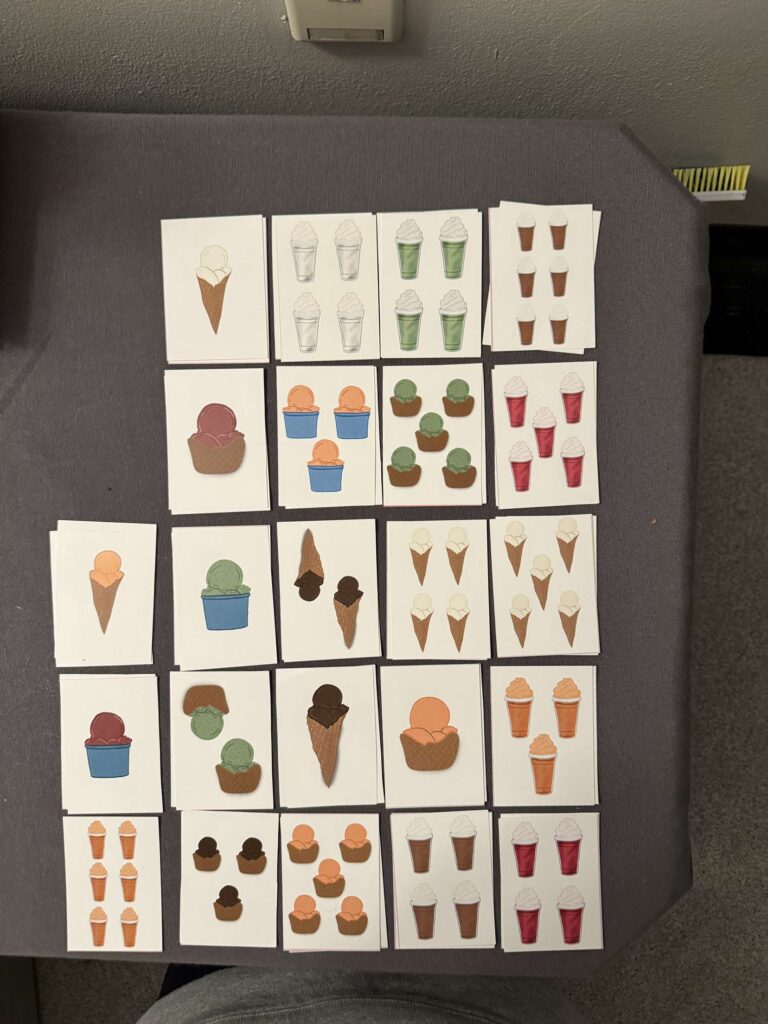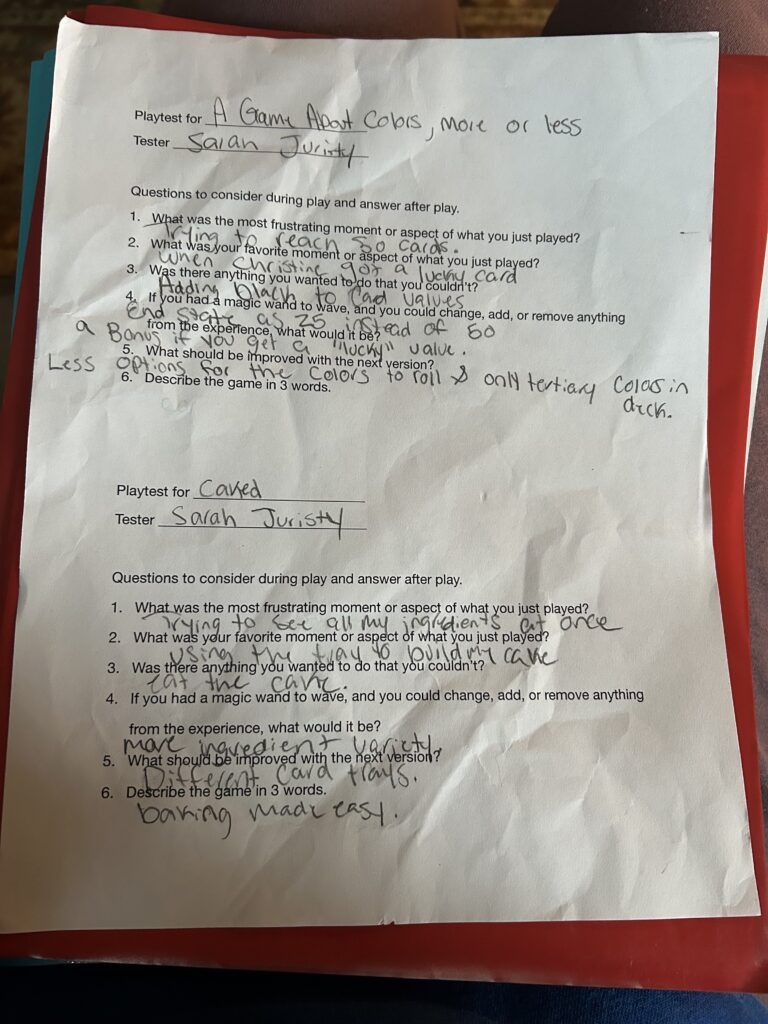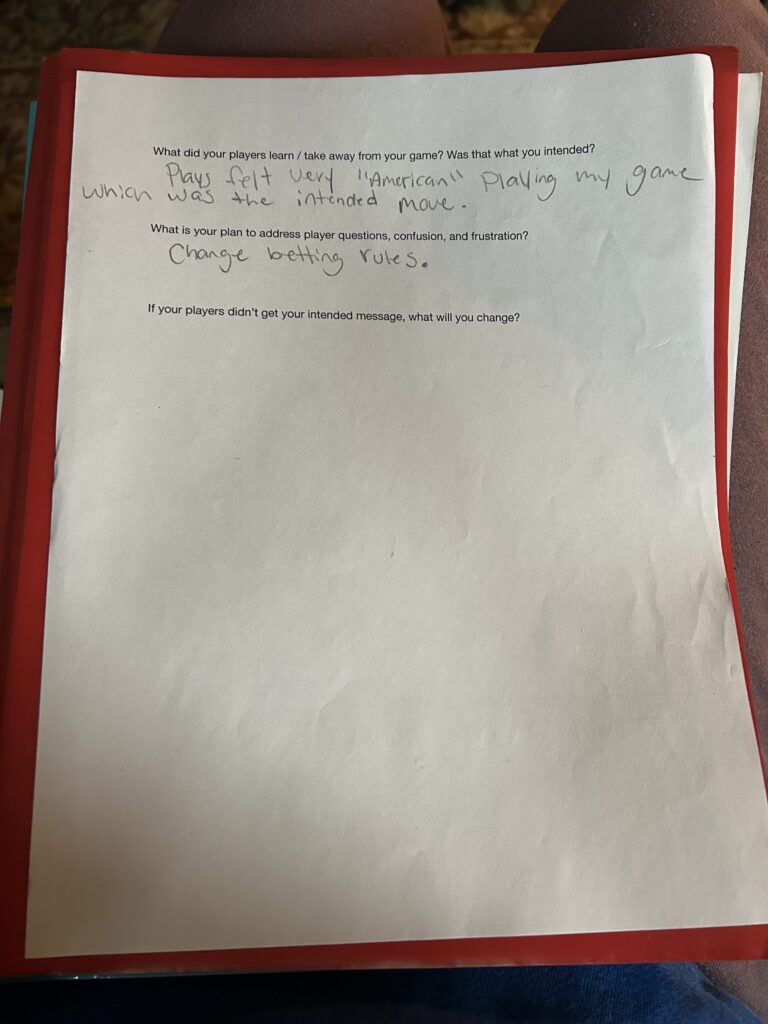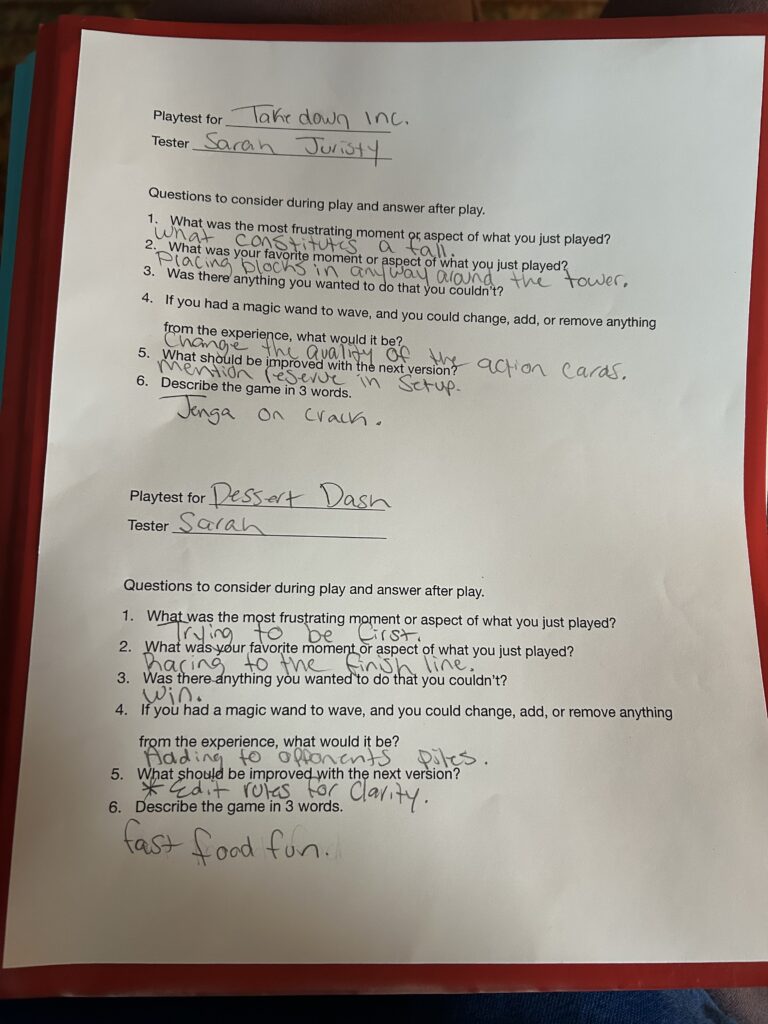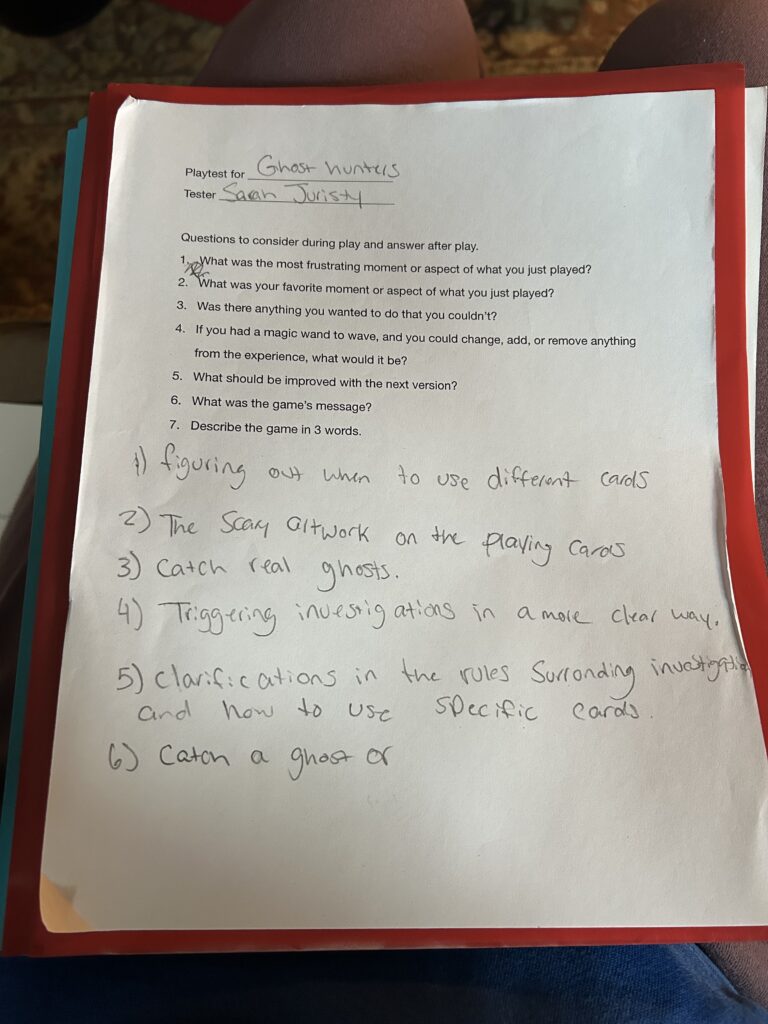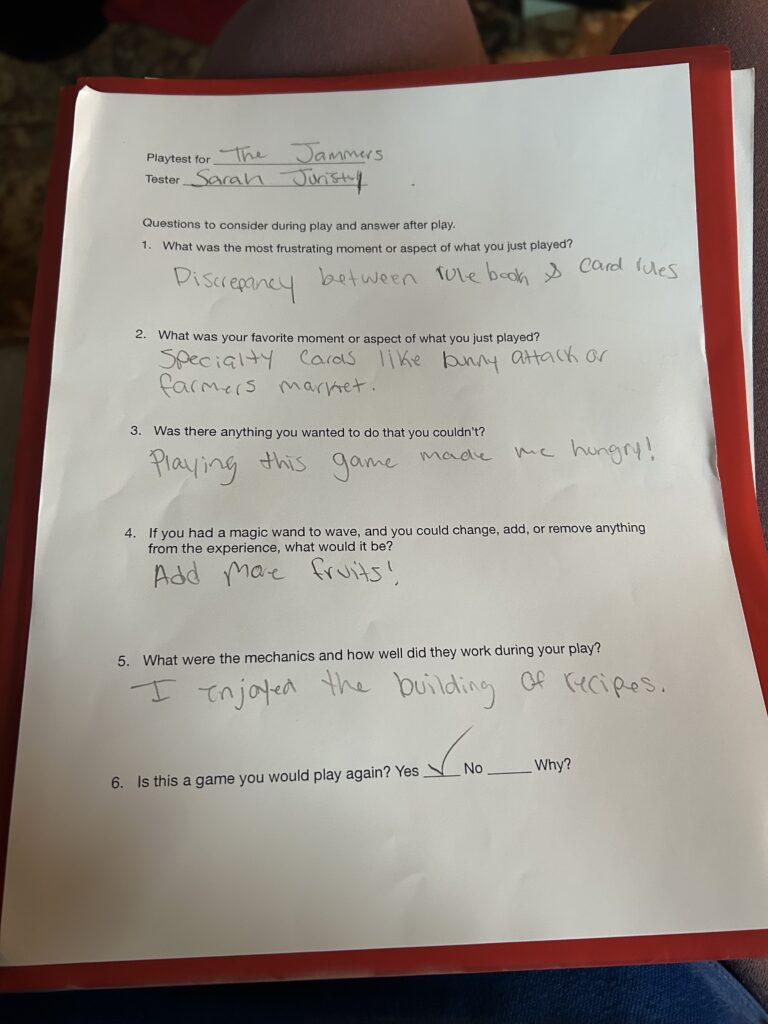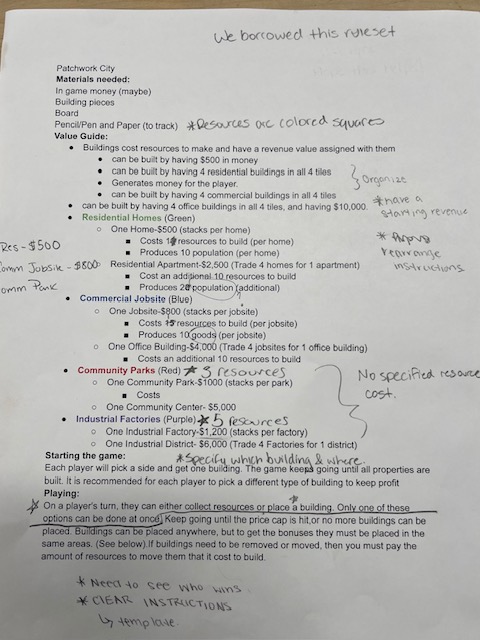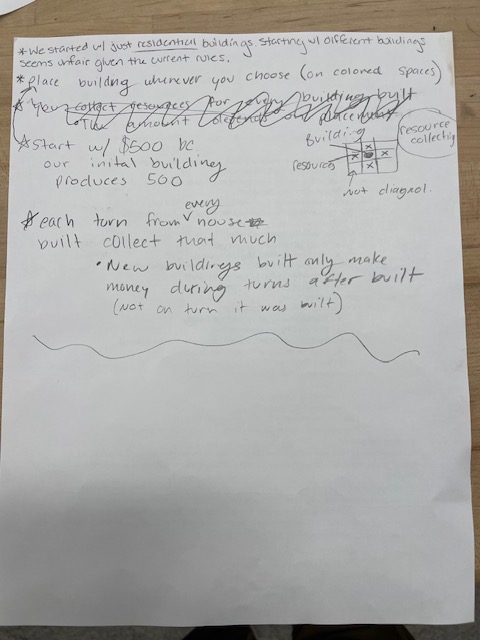Introduction:
Quads is a fast-paced card game that blends the style of Poker with the mechanics of Spoons. Players pass cards between themselves, aiming to collect a winning hand to bet on. After a timed card-passing phase, players bet on their hands for the chance to win the pot.
What you will need:
- 3-6 players
- 1 deck of cards that includes Jokers
- A 30-second timer
- Betting chips in at least two different colors (or denominations), with enough for multiple rounds.
Game Setup
- Shuffle the deck of cards. Remember to include the jokers.
- Pass 1 card to each player. The player with the highest card becomes the “Passer”, who will cards from the deck during the Passing Phase. If two players tie, repeat this process between the players who tied until a tiebreaker is reached. If a joker is drawn, discard it and draw another card.
- The winner chooses the direction for passing cards: clockwise or counterclockwise. All players must pass cards in that chosen direction. (If you’d like, you can alter the direction of play after every round)
- Deal a number of chips depending on the difficulty you choose to play the game:
- Easy: Deal 5 green chips and 6 red chips to each player (21 points to start)
- Normal: Deal 4 green chips and 3 red chips to each player (15 points to start)
- Hard: Deal 2 green chips and 6 red chips to each player (12 points to start)
Green chips will be counted as 3 points, and red chips will be counted as 1. Extra chips should be made accessible if players run out of certain chips, and wish to exchange for chips of an equivalent value. If new to the game, play the game with a Normal level of chips.
Hand Rankings
This game borrows the hand ranking system from Poker, but removes some of the winning hands. Familiarize yourself with the ranking of hands below. Players with the highest ranking hand will claim the pot, or all chips in play. In the event of a tie, players must split the pot evenly, regardless of any extra cards (unless you are playing the Advanced Edition). When ready, start the passing phase.
Here are some examples of the hands you should be looking for.
- Four-of-a-Kind (Quads) – 4 cards of the same number (all suits): (4♠,4ç,4♦,4♣)
- Straight Flush – 4 sequential cards of the same suit: (2♠,3♠,4♠,5♠)
- Three-of-a-Kind – 3 cards of the same number (regardless of suit): (3♣,3♥,3♠,1♥)
- Two Pair – 2 pairs of cards with the same number (regardless of suit: (6♥,6♦,8♣,8♠)
- Pair – A pair of cards that share the same number (regardless of suit): (7♦,7♠,2♦,6♦)
Passing phase
- Shuffle the deck and deal 4 cards to each player. Place the remaining cards in an accessible place, this will become the draw pile. If a player receives a joker, reshuffle the joker back into the draw pile.
- When ready, the Passer will begin by drawing a card and discarding a card in their chosen direction. The player who received the card from the passer must collect the card and discard a card in the direction of the passer.
- When the last player in the cycle receives a card, they must discard a card in a pile adjacent to the draw pile. You should maintain a hand of 4 cards at all times.
- At any point during this process, players can “lock-in” their hand by placing their cards face-down and announcing it to the table. Locked-in players can no longer receive or discard cards. Players must pass around the locked-in player, and can draw if the previous passer locks-in.
- Continue this process until the first player locks in, or a Joker is drawn. If a Joker is drawn, the Passing Phase ends immediately and the betting phase begins.
- After the first player locks in a 30-second timer will begin. All other players must lock in their hands before the countdown ends to continue to the Betting Phase. When all but one player lock-in their hand, the passing phase ends immediately.
- Players who are holding more than 4 cards by the end of the Passing Phase are disqualified from the betting phase. Move quickly.
Betting Phase
Once the Passing Phase ends, all players (that are not disqualified) enter the betting phase. Given their current hand, players can choose to:
- Bet High – Place one green chip worth 3 points.
- Bet Low – Place one red chip worth 1 point
- Fold – Place your hand face down and disqualify yourself, making no bet.
The player who is locked-in first must start the betting phase, and the order of betting will follow the order of passing. After all decisions have been made, players enter the Reveal Phase.
Reveal Phase
Once the Betting Phase ends, all betting players must reveal their hand to the table. The player with the highest ranking hand will take the entire pot. If two players tie, and no other hand outranks them, they must split the pot as evenly as possible (Exchange chips if needed). If all players but one fold, the winner can take the pot “uncontested” and does not need to reveal their cards (It would make the game funnier if they did though). Players who run out of chips are eliminated from the game unless house rules state otherwise.
Collect the cards, shuffle the deck, then restart the Passing Phase. Continue until a Win Condition is reached.
Win conditions
Players can decide a winner using points, rounds, disqualification, or some mixture of the 3. Here’s some standard examples to provide a framework, but feel free to create your own:
- After 5/10/15 rounds, count the value of the chips. The player with the highest number of points wins. To start, play between 5-8 rounds and choose the winner based on chips.
- Given the number of points each player starts with, set a winning number of points players must reach to win.
- The last player to be disqualified wins the game.
Advanced Edition (Optional Rules): Read if you’ve played Quads enough
If you’ve played enough Quads to understand the game, and want more complexity/challenge, feel free to add some bonus rules:
- No betting limit: Players can bet as many or little points as desired (be sure to adjust the points/starting chips to account for this)
- Add more winning hands to the game
- Straight – Any hand of cards that progress in numerical order, regardless of suit
- High Card – If two players tie with the same hand rank, the player with the highest unmatched card wins the pot.
- Add 1-2 more decks to the original to increase complexity
- Expand the hand limit from 4 to 5
- Play with more players (alter time and decks for extra players)
